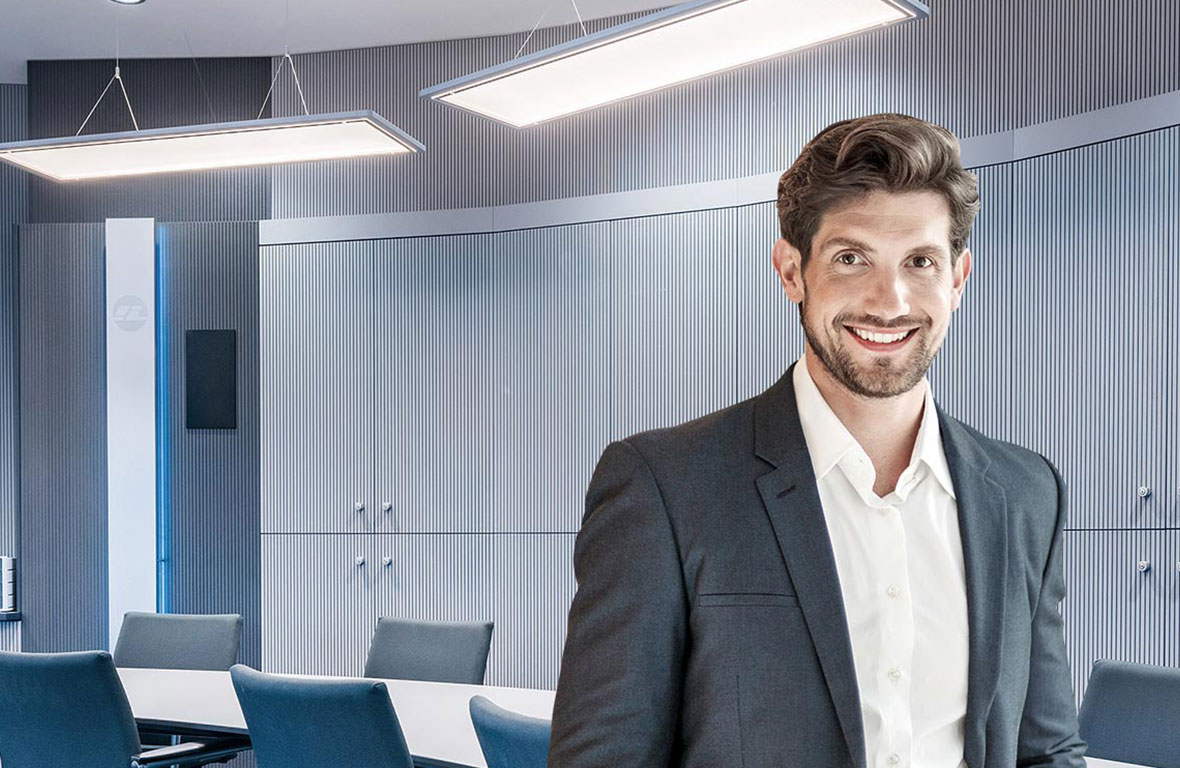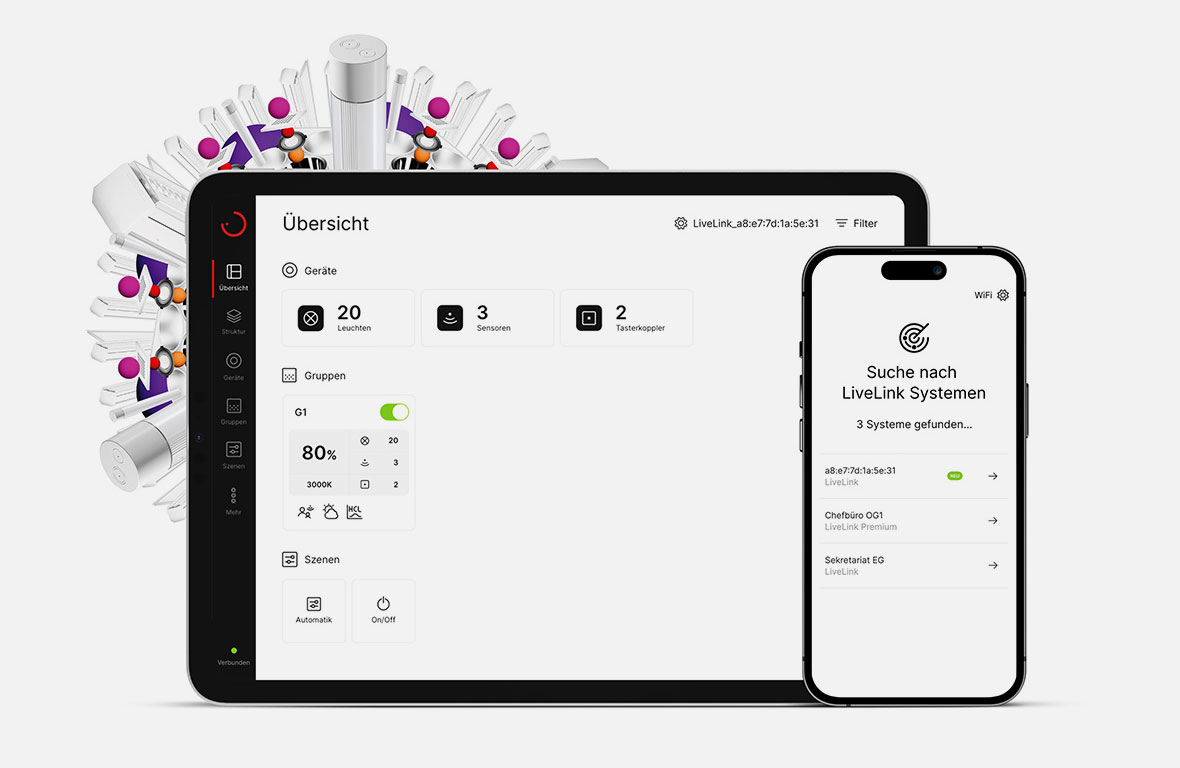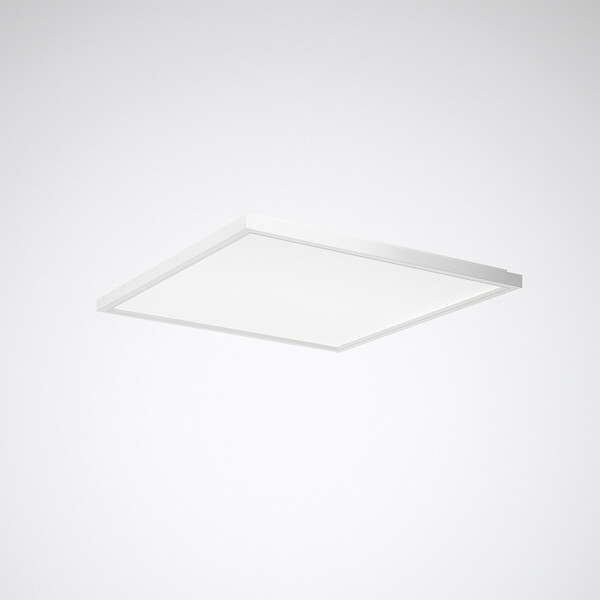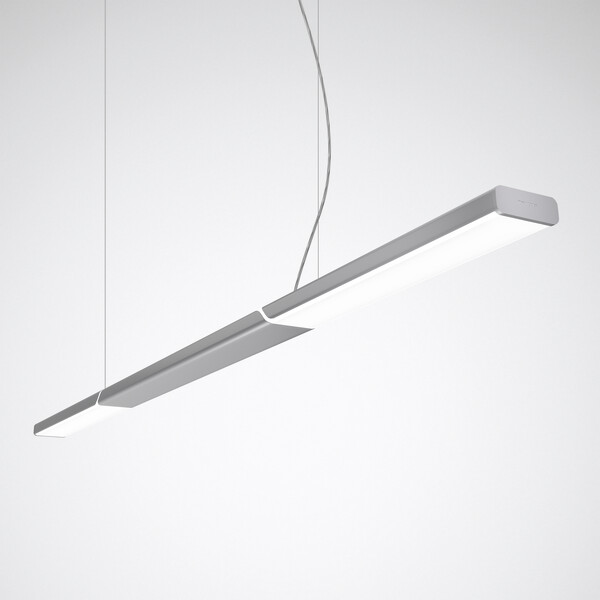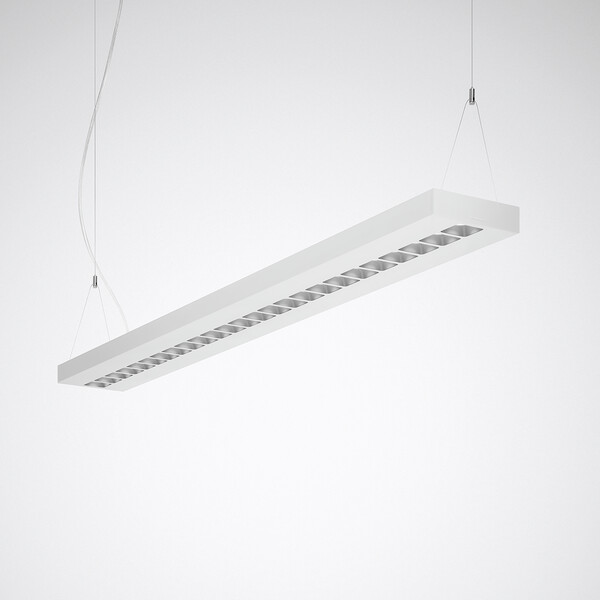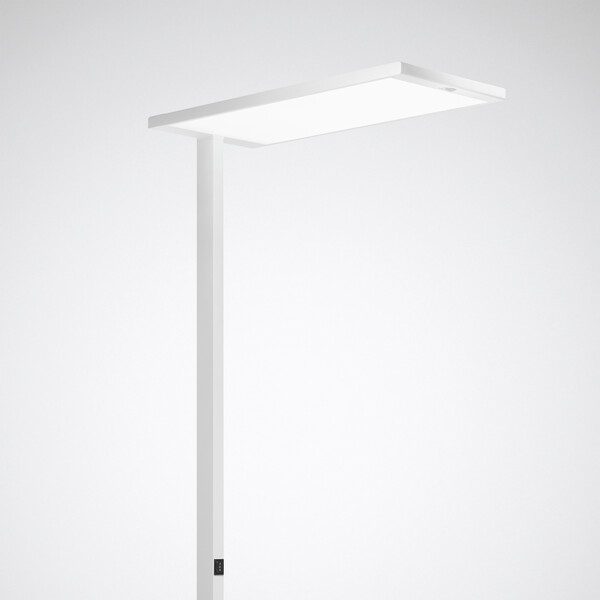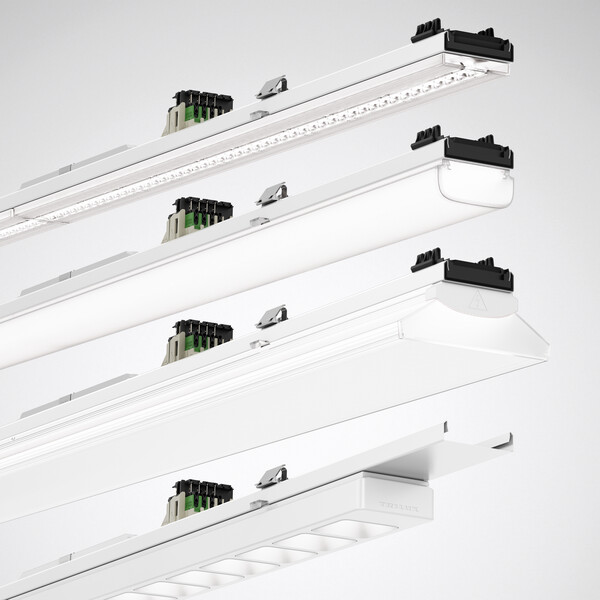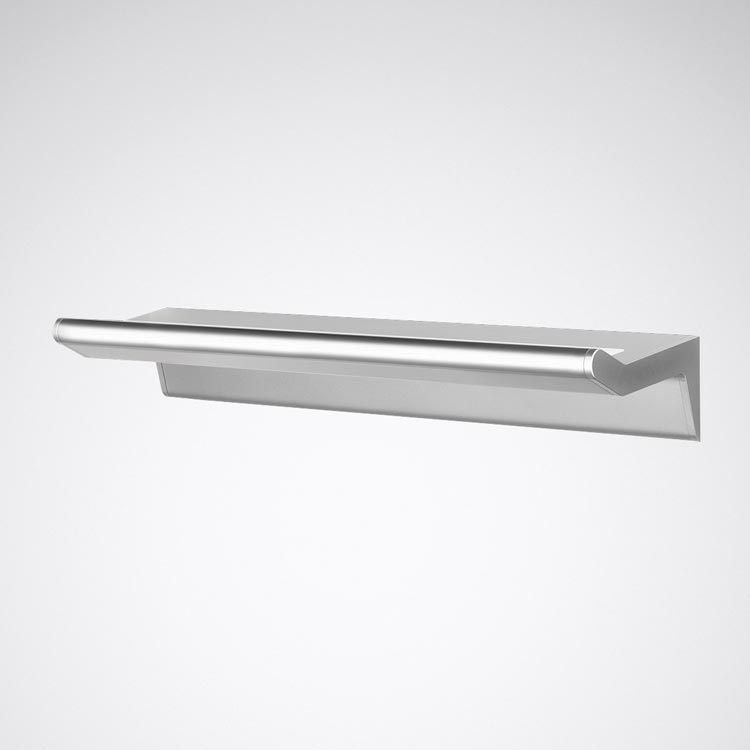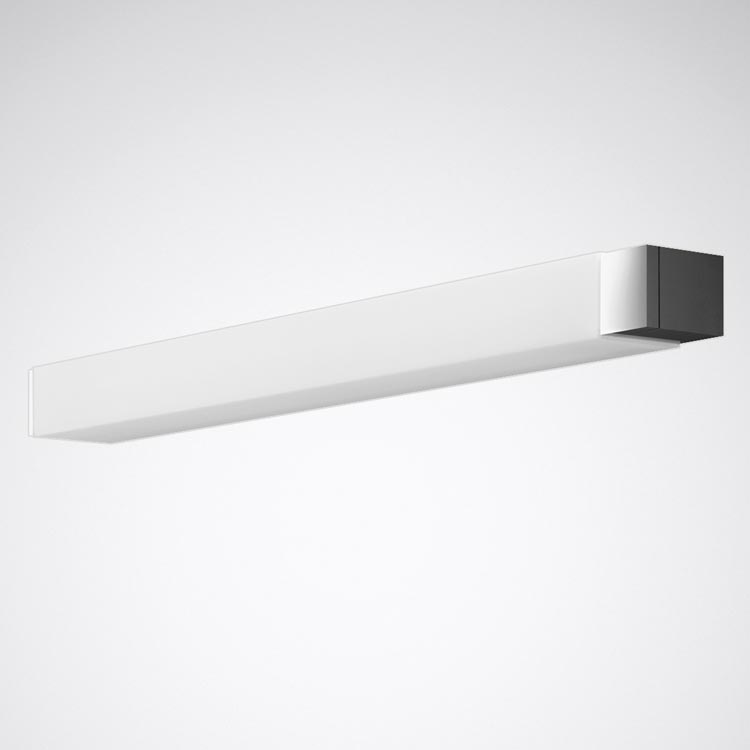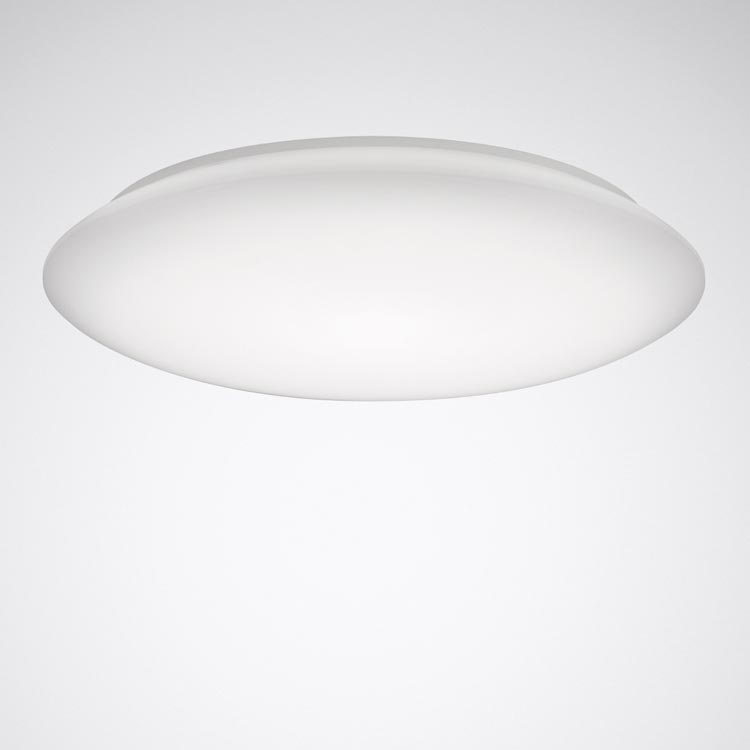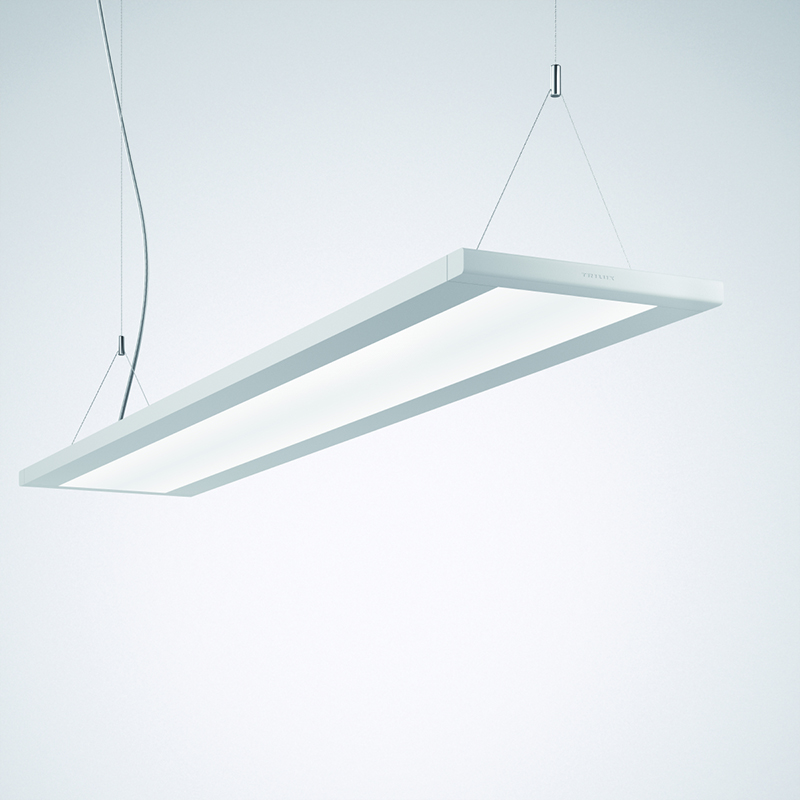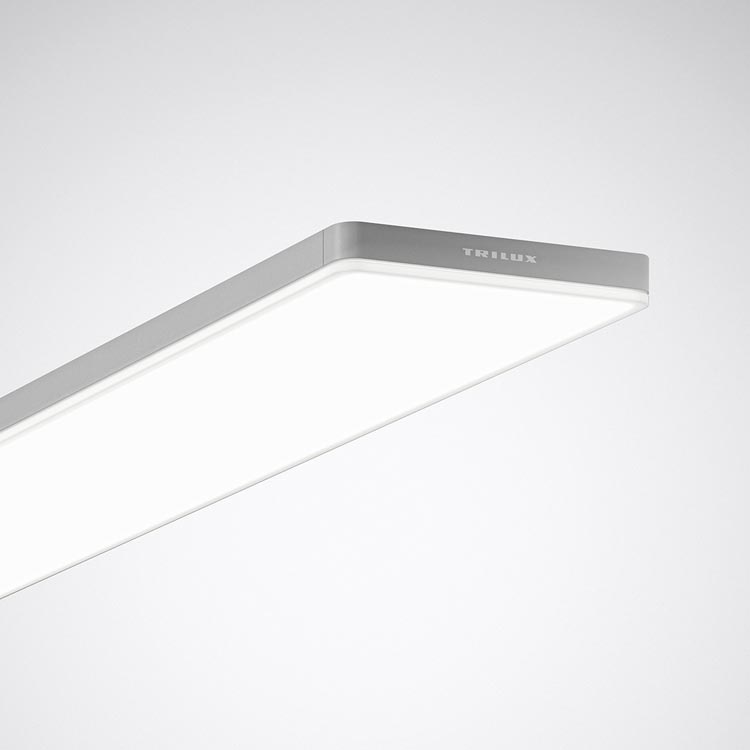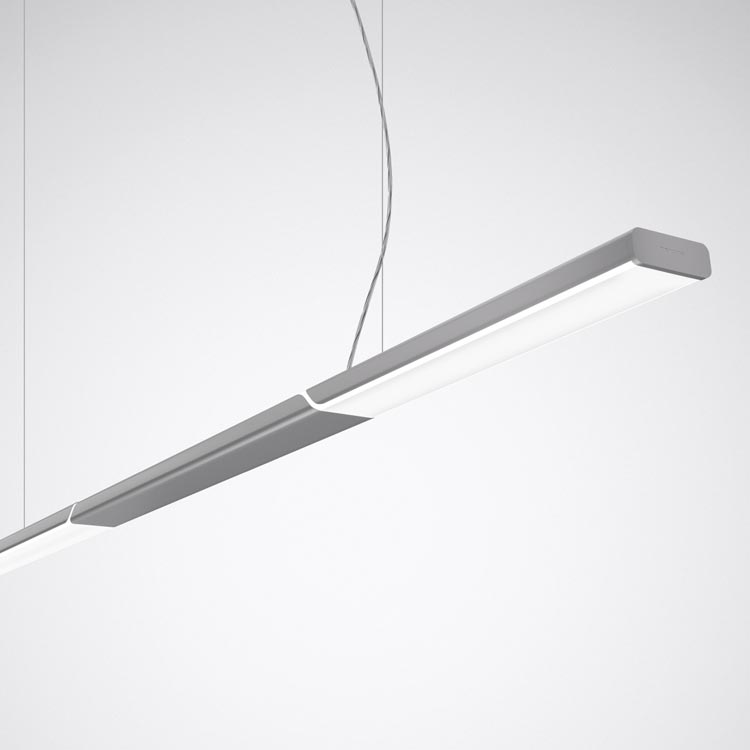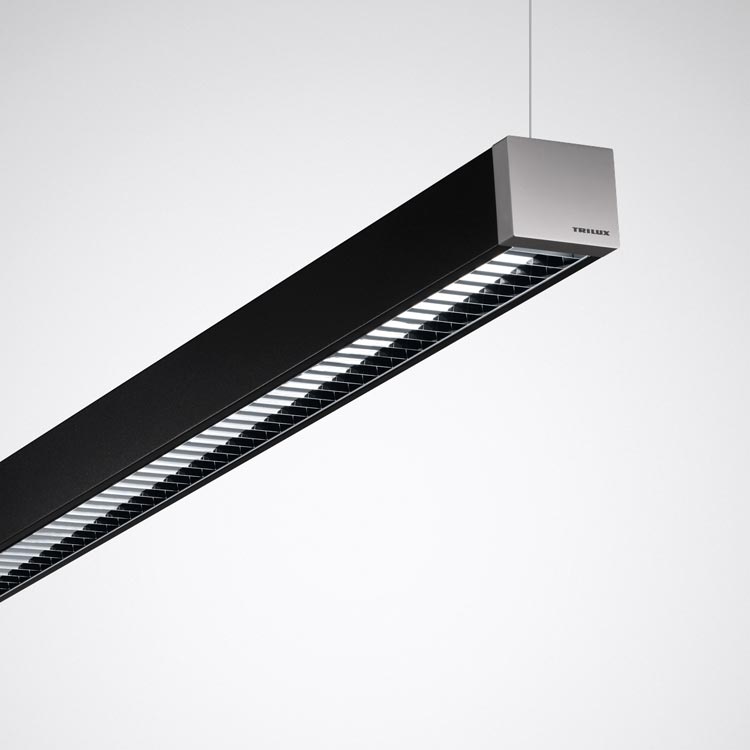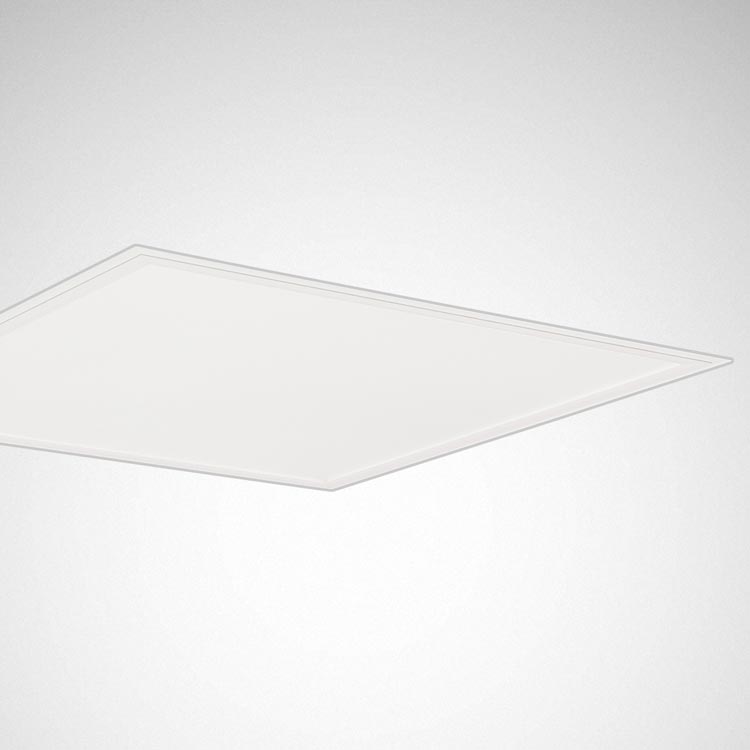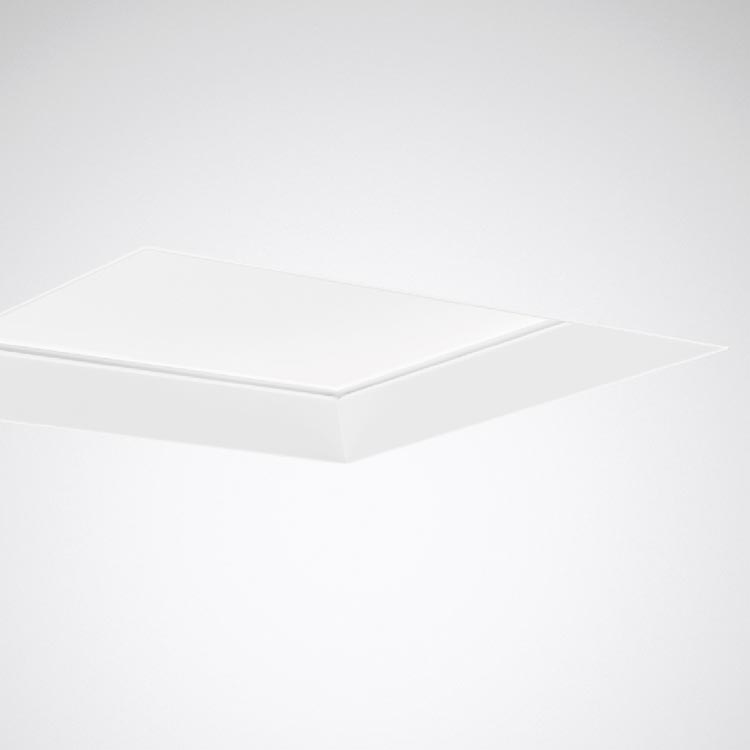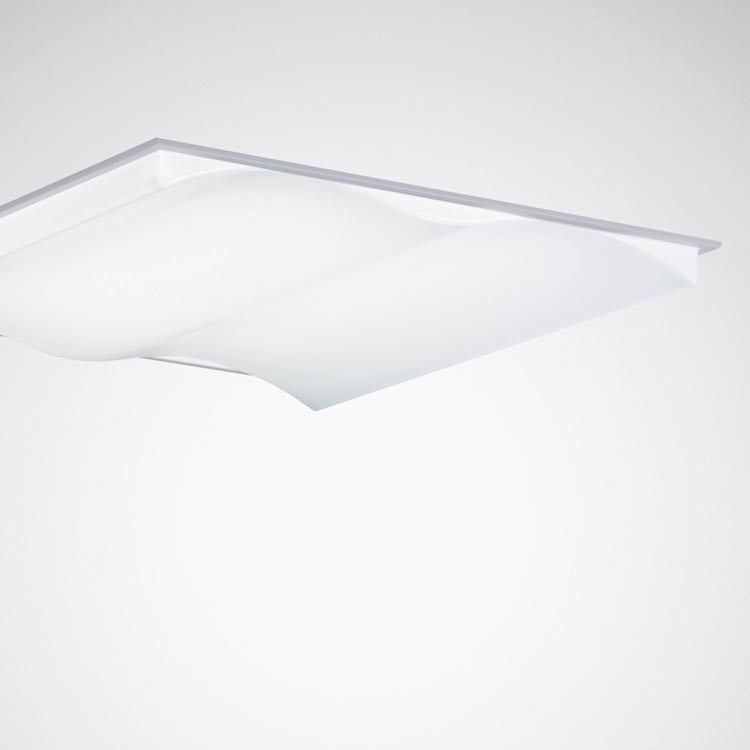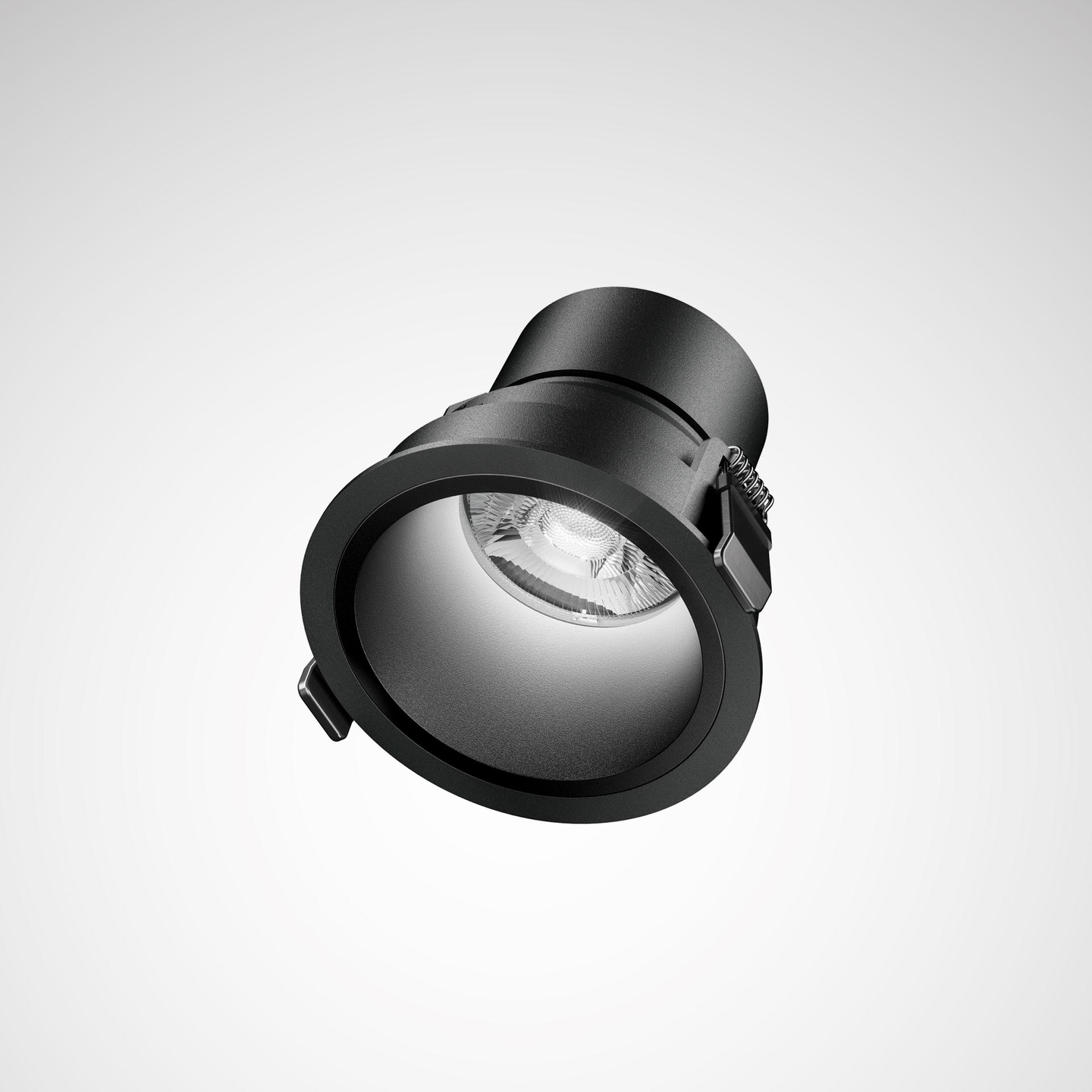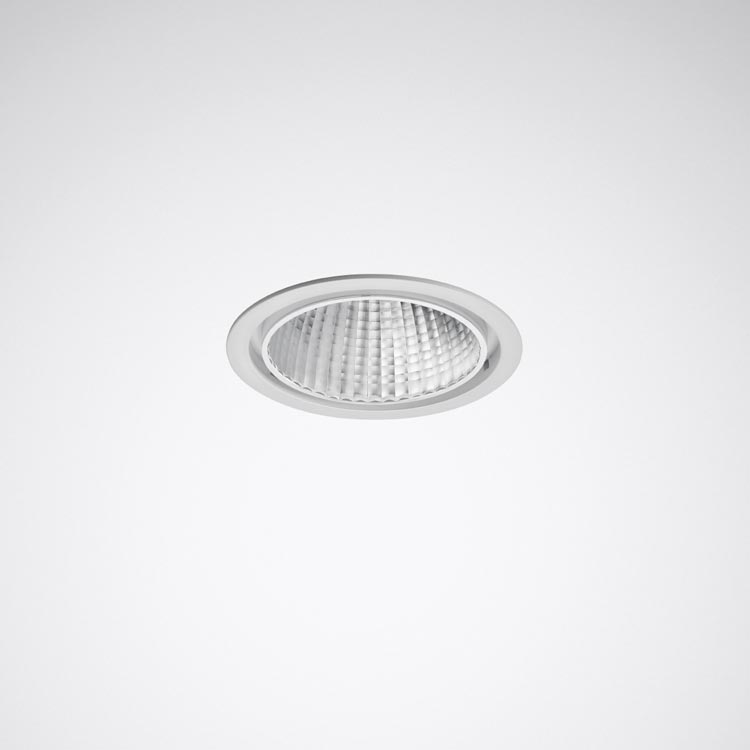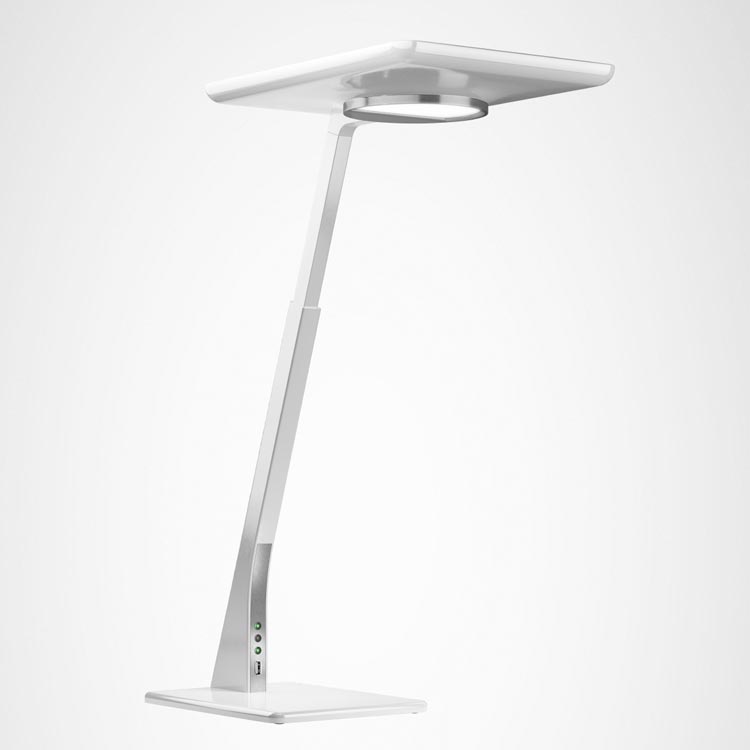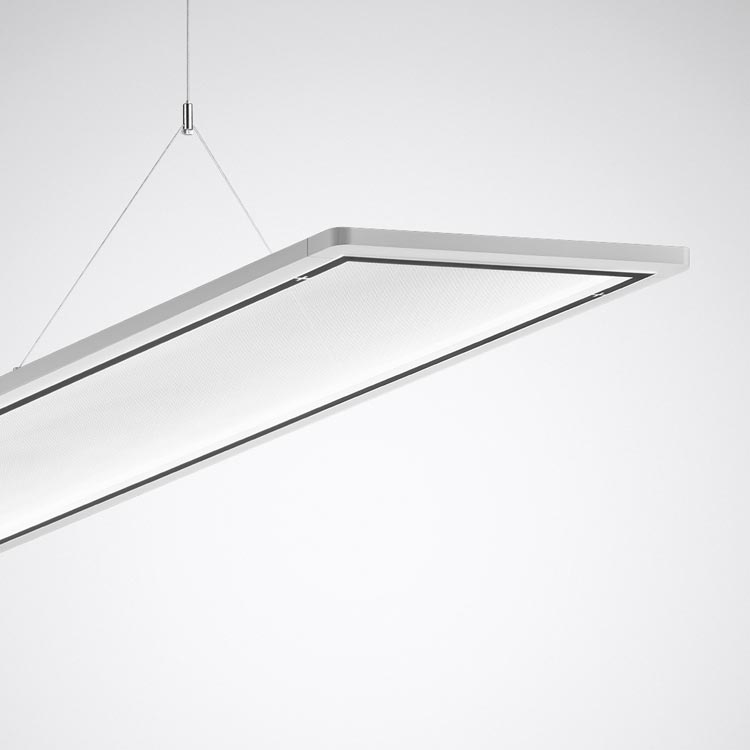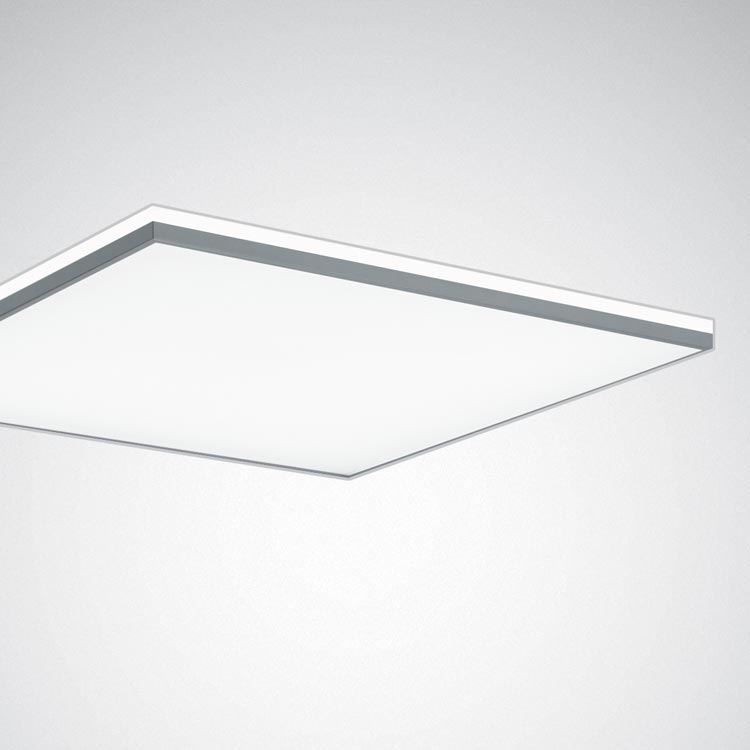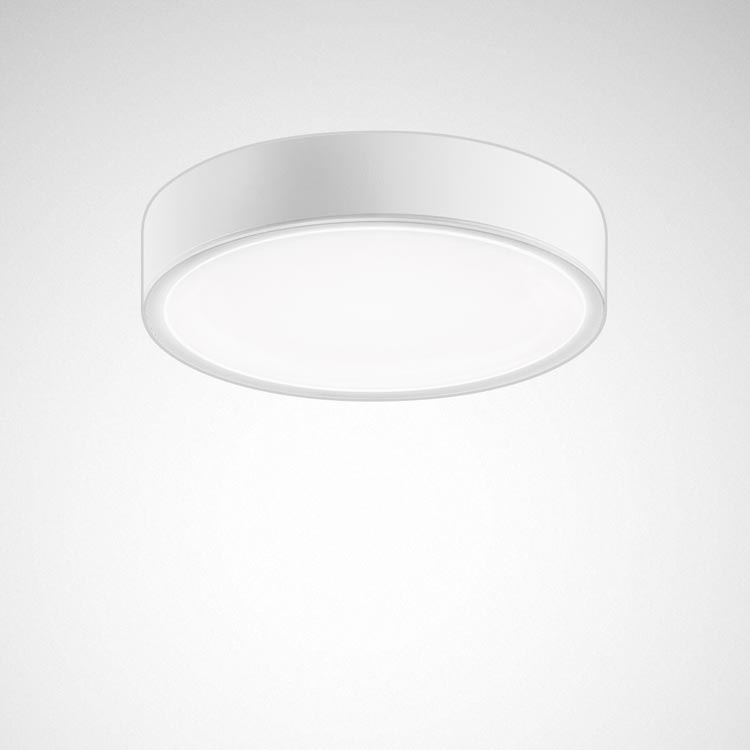Human centric lighting
Experiencing natural light
Human Centric Lighting provides targeted, long-term support for people's health, well-being and performance through holistic planning. People and their requirements for living, leisure and working spaces are consistently placed at the center of the lighting solution. The interdisciplinary balance between the parameters of artificial lighting, natural daylight, architecture, technology and data creates the right light at the right time for the respective use.
Office
TRILUX HCL brings daylight into offices – and ensures optimum working conditions and an improved atmosphere of well-being thanks to customised light.
Benefits of HCL solutions in offices:
Going to work and returning home in the dark: those working from 9 to 5 in offices get to see little natural sunlight, especially in the winter months which can dampen moods and influence the sleeping and waking cycle. With a circadian lighting solution the spectral composition of the office lighting dynamically changes, analogue to natural sunlight, over the course of the day – this strengthens the biological rhythm and improves well-being.
Depending on age, mood and health, "optimum" light means different things for different people. Visual acuity for example decreases with age, which is why older employees usually need higher illuminance than their younger colleagues. With an HCL lighting solution, central lighting parameters such as light colour and illuminance can be individually varied to provide exactly the right light for the particular user.
Norms and regulations ensure compliance to important minimum standards with lighting design. However, this "following the rule book" approach only partly exploits the potential of a lighting solution. An intelligent HCL lighting solution adapts its luminous intensity and light colour precisely to the individual needs of the user, improving personal work conditions.
Flexible areas of work, networked working in a team and zonal work areas – typical office work has changed dramatically in recent years. With a lighting solution that can be adapted flexibly to the specific situation, optimum visual conditions are ensured everywhere despite such high flexibility. To ensure that users feel good at any desk, they can set up their own personal lighting scenario with an Human Centric Lighting solution and take it with them to any workstation using an app.
Industry
High halls with hardly any windows – no problem: with Human Centric Lighting, TRILUX brings daylight into industrial halls to create optimally illuminated workplaces and light that is able to improve the well-being and performance.
Benefits of Human Centric Lighting solutions in the industry:
Nowadays, it is not only cost-effectiveness, safety, reliability and optimum visual conditions that play an important role. Concentrated and precise work over a longer period of time is also supported by the well-being of employees. Human Centric Lighting supports the motivation of workers and thus the goal of achieving optimum work results.
TRILUX also offers a wide range of luminaires in industrial environments with various protection types, protection classes and optimized optics for all areas. With the LiveLink light management system and various sensors for the respective areas (e.g. high-bay applications), the appropriate control system is also available.
Not all industries are the same. TRILUX always offers the perfect solution for your requirements. Coordinated, individual HCL lighting concepts that do not automatically have to be expensive. Let us advise you.
There is no one-size-fits-all perfect solution for night shift lighting. TRILUX's answer to the question is ' AS MUCH AS NECESSARY AND AS LITTLE AS POSSIBLE. Ever since the International Agency for Research on Cancer of the World Health Organization (WHO) classified the continuous night shift as probably carcinogenic in 2019, everyone should be aware that a balance must always be struck between occupational safety and influencing the circadian rhythm. TRILUX supports independent scientific studies in this area, such as the 'Light and Shift' study (Lichtundschicht_Studieninformation (dguv.de)). If you would like to have the change in lighting scientifically monitored, TRILUX will be happy to help.
Best Practice
Human Centric Lighting TRILUX Hall BA09
The demands made on industrial lighting are high: in addition to occupational safety and optimum visual conditions, the well-being of workers is increasingly focused on. Human Centric Lighting is more than just a performance of duty. Holistic lighting concepts are able to lift the safety, ability to concentrate and well-being of employees to a new level. TRILUX recently converted its production hall to HCL lighting during running operation, and replaced its E-Line LED inserts with Tunable White (Active) variants.
Why Human Centric Lighting with Trilux?
Individual full solutions from a single source
We make light for people: Ranging from professional lighting consultation and optimum product selections to intelligent light control, TRILUX supplies all the components of a professional Human Centric Lighting system from one source. TRILUX therefore also contributes to healthy biorhythms and satisfied workers that are in this way optimally supported in their daily work.
TRILUX has been actively involved with Human Centric Lighting since 2004 and is actively engaged in standardization work.
TRILUX offers a wide range of luminaires and the appropriate control systems. We launched our first system based on T5 back in 2005 and over the years have incorporated the experience we have gained into both new Active luminaires and the control system.
An HCL lighting solution from TRILUX consists not only of individual components but also of the perfect interplay of product, knowledge and service.
TRILUX always offers the perfect solution, from preconfigured to individual HCL lighting solutions. The solutions are always tailored to the needs of your company and if you are not convinced, you can also have the change of lighting scientifically accompanied.
Luminaires
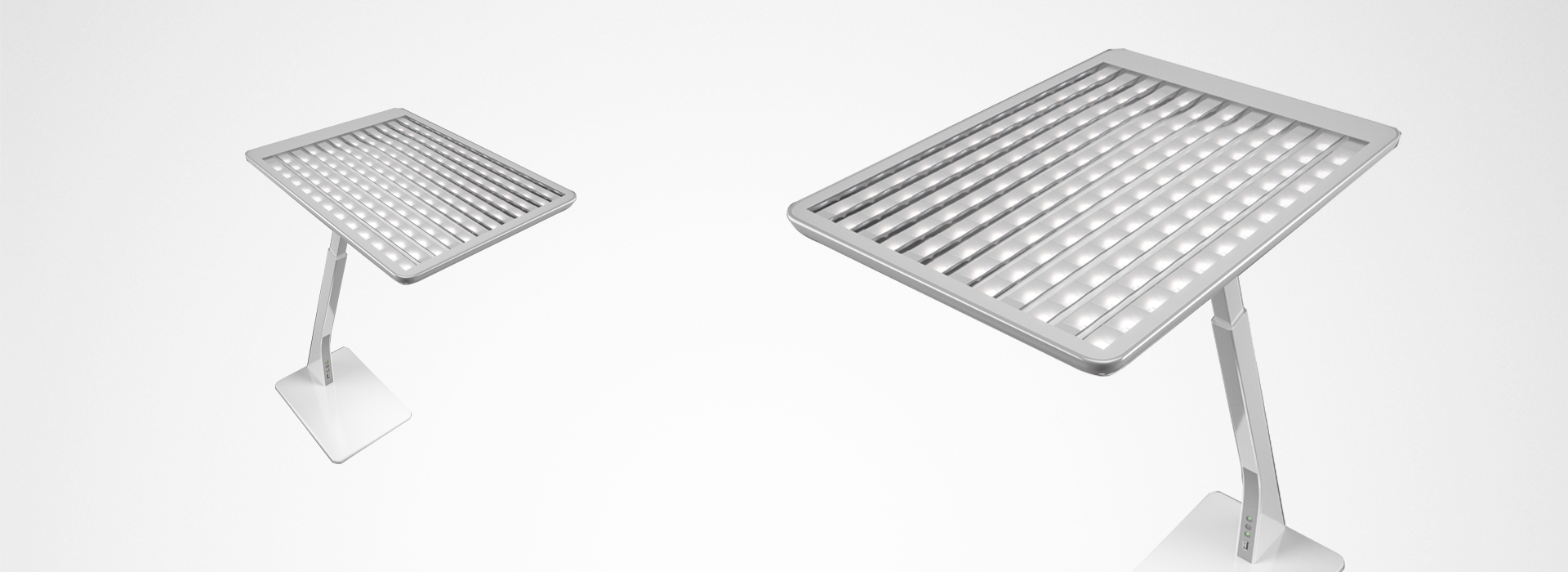
THE TRILUX TUNABLE WHITE (ACTIVE) PORTFOLIO
Good when a company decides to invest in an HCL solution. Even better if that company can source from a wide product portfolio – enabling the design and lighting technology to be optimally adapted to specific needs and preferences. TRILUX luminaires also feature premium quality materials and top-class workmanship, and convince in terms of light quality, efficiency and durability.
FAQ
There are already a number of publications and standards that deal with the topic of Human Centric Lighting. The requirements of ASR A3.4 and DIN EN 12464-1 always form the basis. These requirements are supplemented by the following documents, for example:
- DIN/TS 67600:2022-08 DIN/TS 67600:2022-08 Supplementary criteria for lighting design and lighting application with regard to non-visual effects of light (also available in English translation (Product search - DIN Media)
- DIN/TS 5031-100:2021-11 Radiation physics in the optical domain and lighting technology - Part 100: Melanopic effects of light on humans mediated by the eye - Quantities, symbols and action spectra (Product search - DIN Media)
- CIE S 026/E:2018 CIE System for Metrology of Optical Radiation for ipRGC-Influenced Responses to Light. (CIE System for Metrology of Optical Radiation for {style1}{link1}ipRGC-Influenced Responses to Light) CIE System for Metrology of Optical Radiation for ipRGC-Influenced Responses to Light | CIE
- DGUV publications (German Social Accident Insurance)
FBVW-201: Risk to the eyes from blue light in LED lighting | DGUV Publications
Non-visual effects of light on humans | DGUV Information 215-220 | Regulations | DGUV Publications - BAuA - Meldungen - Using the non-visual effects of light to improve employees' working conditions - Federal Institute for Occupational Safety and Health
- KAN position Consideration of non-visual effects of artificial lighting in standardization, 2022
TRILUX Tunable White (Active) luminaires can also change the colour temperature (specified in Kelvin [K]). These include a DT8 (DeviceType8) Dali ballast and are optimized for the LiveLink light management system. They can also be integrated into other control systems that are compatible with DT8 ballasts. LEDs with 2700 K and 6500 K are usually installed, which can be controlled continuously via the light management system.
The ZVEI (German Electrical and Electronic Manufacturers' Association) defines Human Centric Lighting as follows:
Light has a diverse and constant effect - visually, emotionally and biologically.
Human Centric Lighting (HCL) provides targeted, long-term support for people's health, well-being and performance by holistically planning and implementing the visual, emotional and, in particular, biological effects of light.
Ideally, natural daylight is included (see WELLUMIC) and the lighting system always meets the requirements of ASR A3.4 and DIN EN 12464-1.
NOTHING! When searching for 'HCL', this is often interpreted by search engines as a formula symbol for hydrogen chloride or hydrochloric acid – H2 + Cl2 = 2 HCl.
In lighting, however, HCL is the abbreviation for Human Centric Lighting. If a search engine is used to search for 'HCL', the query must include "light".
According to DIN EN 12464-1:2022, a general colour rendering index of Ra ≥ 80 is required for general areas in offices and industry. However, economy and ecology also play a role in HCL lighting design. Here, HCL lighting systems with Ra ≥ 80 have a clear advantage over systems with Ra ≥ 90. HCL lighting systems with Ra ≥ 90 are possible at any time. Please contact us.
- Licht.de Human Centric Lighting video
- Licht.wissen 21 Guide to Human Centric Lighting (HCL)
- ZVEI HCL definition
- Chronolite
- Lichtundschicht_Study information (dguv.de)
- OLIVE | TRILUX research project
The 2017 Nobel Prize in Physiology or Medicine - Press release
Chronotype questionnaire - IfADo - IfADo
Each system is designed differently. In terms of lighting comfort, an HCL lighting system can improve the quality ranking of a building. The most important green building systems are: LEED, BREEAM, WELL and DGNB
The MEDI describes the Melanopic Equivalent Daylight (D65) Illuminance.
An initial consideration provides the answer to the question "what am I comparing with what", and what is the objective. Because the performance of the Human Centric Lighting luminaire (LED and control gear) is of a higher quality, there is basically a price difference compared to a standard luminaire. If we look at the power consumption and illuminance, the energy consumption is almost identical. On the other hand, there is a demonstrably higher level of satisfaction, as well as a sense of well-being and, as a result, an increased willingness to perform. Human Centric Lighting plays a central role, particularly in the context of current ESG (environmental social governance) requirements and a reconsideration of working environments.

